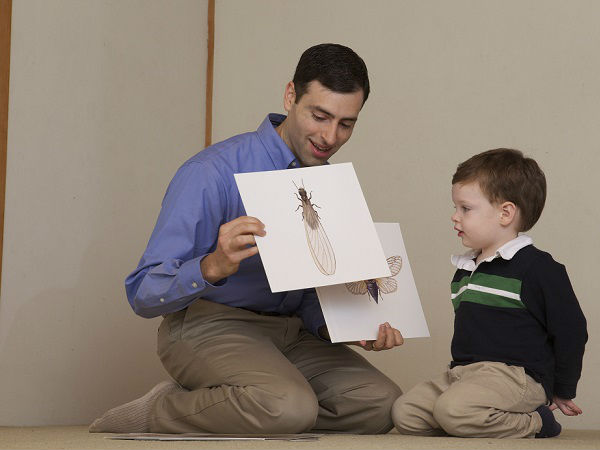Unlike adults, babies have many distinct characteristics of this age group. If not prepared in advance, parents will be alarmed by the strange but completely normal signs in the baby.
content
Infants have moments of apnea
Baby tasted with… tonsils
baby cries without tears
Kids like to turn their heads to the right
Your baby has many special types of brain cells
Distinguish between normal and abnormal

Following the newborn, it is not difficult for mothers to realize that many differences in the baby compared to adults
When a baby is born, fathers and mothers seem to pour all of their thoughts and concerns on the baby. That is why just one slight abnormality in a newborn can startle adults. However, learning about newborn babies, mothers will find that they have many different things from older children or adults. All newborn babies "possess" 5 strange characteristics below:
Infants have moments of apnea
It is normal for a newborn baby to stop breathing sometimes. However, just seeing the baby's breasts do not budge for 5 to 10 seconds is enough for parents to panic. However, with infants, it is not a problem for babies to stop their breathing from time to time. The most important thing that moms need to count the baby breath. On average, babies breathe about 50 to 50 beats per minute. For older babies, the breathing rate will be between 30 and 40 breaths.
Baby tasted with… tonsils
Although the number of infant taste cells is not different from that of adults and older children, taste receptor cells are scattered in locations far more remote than the tongue. For example, the inside of the baby's throat and tonsils both contain taste cells. Babies can recognize tastes such as sour, sweet, and bitter, but cannot taste salty until 5 months. When babies begin to solids, they will likely love the tastes mothers often eat during pregnancy and when breastfeeding starts.

Stimulate the baby's taste buds in 10 steps Baby's taste buds begin to develop very early, even while the baby is still in the womb. After birth, taste gradually develops and natural curiosity will help your baby explore the vast world around him, and help distinguish between foods or flavors that like or dislike.
baby cries without tears
On week 2, 3 babies started to cry. But the real tears only appear when the baby is 1 month old. In the afternoon and evening, babies are the most fussy about crying. Rarely is a parental action that can soothe a baby at this time. The peak of fussy crying usually occurs in weeks 6 to 8. When the baby is 3 months old, the fussy state will decrease significantly.
Kids like to turn their heads to the right
Infants are more likely to turn their head to the right side while they are lying down. Only about 15% of babies lie facing their heads in the opposite direction. This can affect the baby's head shape. In the first days, mothers should pay attention to tilt the baby's head evenly to avoid distortion.
Your baby has many special types of brain cells
Although brain size will increase continuously during the early years of life, babies already have brain cells that are responsible for the transmission of nerve messages. As adults, these nerve connections are "cut" in some way, making babies think more focused, but in return, less creative ability.

Suddenly 4 factors increase the intelligence of the baby Genetics and nutrition are two factors that directly affect the child's brain development. However, these are not the only two factors. Many studies show that age, parenting or kindergarten time can also affect a child's intelligence.
Distinguish between normal and abnormal
In addition to the above, in babies, there are many things that are not the same as adults or adults. You will notice that the baby's body has a special aroma of milk that makes the mother want to breathe forever. Baby stool does not have an unpleasant odor before entering the weaning phase. Newborn babies also have a lot of buffalo shit on top of their heads. These are all strange things, unlike adults at all, but baby is completely healthy and just grows up. If you notice any of the above, you can be completely assured because with time, these symptoms will disappear. But please note the following manifestations, mother:
Baby stopped breathing for more than 10 seconds
The baby does not urinate
Do not go outside for 48 hours
Body temperature above 38 degrees C or below 36.5 degrees C
Rapid breathing over 60 beats per minute
Concave in the ribs when breathing
Wheezing, wheezing
The belly button smells, is watery or bleeding
The crying does not decrease even when the baby is carried out with soothing measures such as holding and wrapping a towel.
Babies are often so sleepy that they are not alert enough to breastfeed.
Unusual signs of health: Diarrhea, cough, fever, eyes rolling, ear discharge ...
The baby does not want to breastfeed or the sucking power is very weak
Your baby is vomiting a lot, especially when the vomitus is green or yellow.














